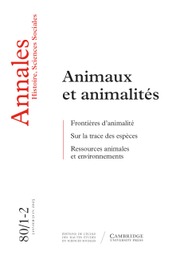Article contents
Folkloristes et médiévistes face au texte littéraire : problèmes de méthode
Published online by Cambridge University Press: 25 May 2018
Extract
La littérature médiévale en langue vulgaire est plus largement imprégnée d'éléments folkloriques que celle de n'importe quelle autre période. Les oeuvres savantes — écrits philosophiques, théologiques ou autres — étaient toujours en latin (les sermons, toutefois, étaient émaillés de proverbes, de récits facétieux ou de légendes populaires). Les récits en langue vulgaire, eux, ont souvent pour cadre le monde merveilleux du conte. Même les romans courtois, tels ceux de Chrétien de Troyes, ou les lais de Marie de France, les Nouvelles de Boccace et les Contes de Canterbury de Chaucer sont étonnamment proches des contes populaires dont ils dérivent ou qui, à l'inverse, en dérivent. Magie, croyances et savoir populaires sont partout. Théoriquement, donc, le médiéviste devrait connaître le folklore au moins aussi bien que le latin, mais, bien souvent, tel n'est pas le cas. Joseph Bédier tournait en dérision, à cause sans doute de leurs excès, ses collègues (les « folkloristes ») qui étudiaient les origines du conte populaire. Mais, ce faisant, il a retardé de plusieurs décennies le développement des études de folklore en France.
Summary
Of all eras, the literature of the Middle Ages is the most heavily laden with folklore. This essay sets out the methods and théories of folklorists that seem to be of greatest use to the literary medievalist. Of most importance is the relation between written and oral narratives, particularly the folktale. Principles by which the researcher establishes the connection between narratives of différent worlds are outlined, and guidelines for determining priority and hypothesizing the existence of oral taies are discussed
- Type
- La Culture Médiévale
- Information
- Copyright
- Copyright © Les Éditions de l'EHESS 1979
References
Notes
1 Loomis, Roger Shermann, « Arthurian tradition and folklore », Folklore, 69, 1958, pp. 1–25 CrossRefGoogle Scholar; cf. Cormier, R. J., « Tradition and sources. The Jackson-Loomis controversy re-examined », Folklore, 93, 1972, pp. 101–121.CrossRefGoogle Scholar
2 The song oflgor's campaign, trad. par Vladimir Nabokov, New York, McGraw-Hill Book Co., 1960, p. 6.
3 Paul A. Olson, « Chaucer's merchant and January's Hevene in Erthe Heere», ELH, 28, 1961, p. 212.
4 The poetical works of Geoffrey Chaucer, F. N. Robinson éd., Boston, Houghton-Mifflin, 1957, pp. 10-11.
5 Mémoire par Mlle Ellen Alexander, préparé à la Pennsylvania State University, 1974.
6 Rosenberg, Bruce A., « Kennedy in Camelot : the Arthurian Legend in America », Western folklore, 35, 1976, pp. 52–59.CrossRefGoogle Scholar
7 Dorson, Richard M., « The identification of folklore in American literature », Journal of American folklore, 70, 1957, pp. 1–8.Google Scholar
8 Taylor, Archer, « Folklore and the study of literature », réimprimé dans Alan Dundes, The study of folklore, Englewood Cliffs, Prentice-Hall, 1965, pp. 34–42.Google Scholar
9 Utley a publié plusieurs articles de ce genre dont le plus important est « Arthurian romance and international folktale method », Romance philology, 17, 1964, pp. 596-607.
10 Panzer, Friedrich W., Studien zur germanischen Sagengeschichte, Munich, O. Beck, 1910.Google Scholar
11 Voir Paul E. Beichner, « Characterization in the Miller's taie », dans Chaucer criticism, I, Richard Schoek et Jérôme Taylor eds. Notre Dame, University of Notre Dame Press, 1960, pp. 117-129.
12 Kittredge, George Lyman, «Sir Orfeo », Journal of American philology, 7, 1886, pp. 176–202.CrossRefGoogle Scholar
13 Cormier, Voir R. J., One heart one mind : the rebirth of Virgil's hero in médiéval French romance, Romance monographs, 3, University Miss., 1973, pp. 228–241 Google Scholar, pour des spéculations sur la situation romanesque et les effets du développement de la communication écrite à l'époque où se forme le roman médiéval.
14 Dans sa préface (The Mabinogion, J. M. Dent and Sons Ltd, 1974, pp. xxxm-xxiv), Gwyn Jones attribue à The types of the folktale et au Motif-index of folk-literature 1’ « élargissement continuel » des horizons littéraires pour l'étude des narrations médiévales celtiques.
15 Rosenberg, Bruce A., « The three taies of Sir Degaré », Neuphilologische Mitteilungen, 76, 1975, pp. 39–51.Google Scholar
16 Lewis, C. S., The discarded image, Cambridge, Cambridge University Press, 1964, p. 211.Google Scholar
17 A manual ofwritings in middle English, 1050-1500, I, J. Burke Severs éd., New Haven, Connecticut Academy of arts and sciences, 1967, p. 136.
18 Cette idée est développée plus en détail dans ma contribution « Structuralism and médiéval literature», MLA, 1975.
19 Rosenberg, Bruce A., « Morphology in the middle English metrical romance », Journal of popular culture, I, 1967, pp. 63–77.CrossRefGoogle Scholar
20 A manual…, op. cit., p. 136.
21 Barnes, Daniel R., « Folktale morphology and the structure of Beowulf», Speculum, 45, 1970, p. 432.CrossRefGoogle Scholar
22 Propp, Vladimir, Morphology of the folktale, Austin, University of Texas Press, 1968, p. 100.Google Scholar
23 Rosenberg, Bruce A., « Folktale morphology and the structure of Beowulf: a counterproposal », Journal of the Folklore Institute, 11, 1975, pp. 199–209.CrossRefGoogle Scholar
24 Utley, V., « Arthurian romance…, » op. cit., p. 596.Google Scholar
25 Op. cit., p. xxix.
26 Vinaver, Eugène, The rise of romance, New York, Oxford University Press, 1971.Google Scholar
27 Jackson, Kenneth Hurlstone, The international popular taie and early Welsh tradition, Cardiff, University of Wales Press, 1961.Google Scholar
28 Jones, Gwyn, Kings, beasts and heroes, Londres, Oxford University Press, 1972.Google Scholar
29 Dans une étude inédite intitulée « The study of folklore in literature : an expanded view ».
- 2
- Cited by


